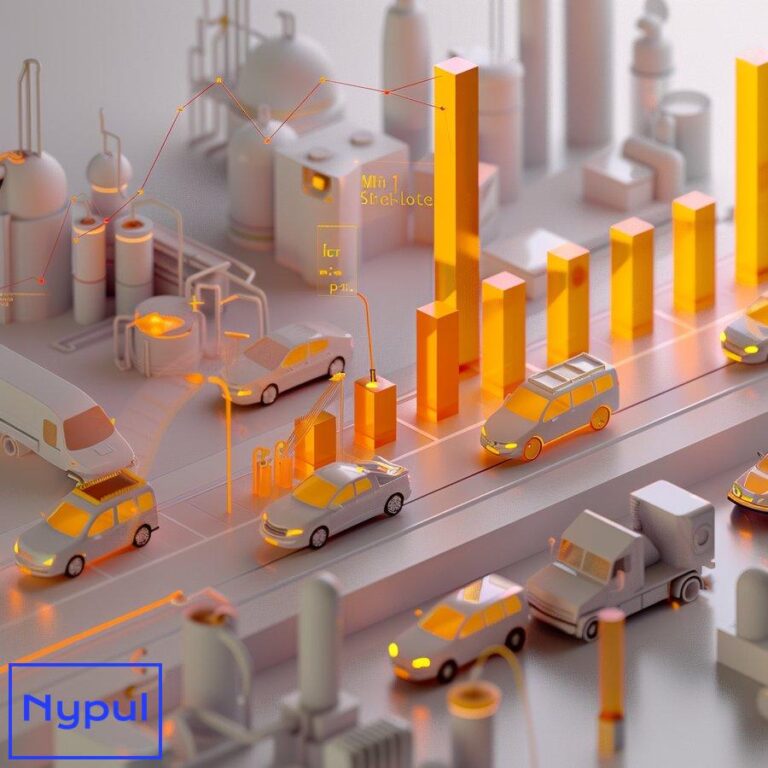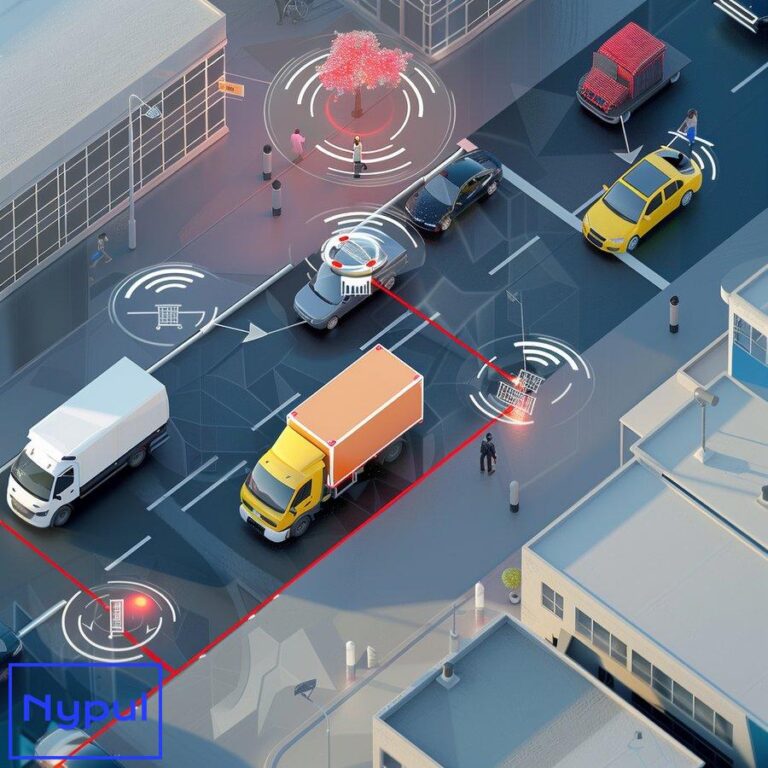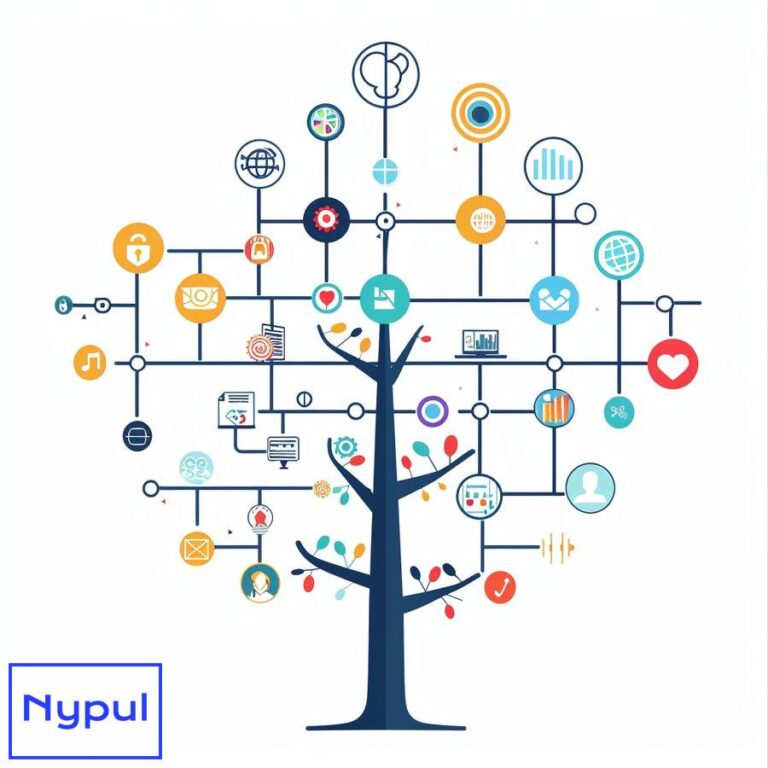What Is Robotic Process Automation RPA for Administrative Tasks
What is Robotic Process Automation (RPA)?
Robotic Process Automation (RPA) is a transformative technology that uses software robots or “bots” to automate repetitive, rule-based tasks traditionally performed by humans. These digital workers operate on the user interface level, mimicking human actions to interact with various applications and systems. RPA bots can perform a wide range of activities, from simple data entry to complex business processes, with speed, accuracy, and consistency that surpass human capabilities.
![]()
The concept of RPA emerged in the early 2000s as an evolution of screen scraping and workflow automation technologies. However, it gained significant traction in the 2010s as organizations sought ways to improve efficiency and reduce costs in their back-office operations. RPA differs from traditional IT automation in that it operates at the presentation layer of software applications, rather than at the backend database or API level.
Key characteristics of RPA include:
Mimicking human actions: RPA bots interact with applications just as a human user would, clicking buttons, entering data, and navigating between screens.
Rule-based execution: RPA follows predefined rules and logic to perform tasks, making it ideal for structured, repetitive processes.
Non-invasive integration: RPA can be implemented without making changes to existing IT infrastructure or applications.
Scalability: Organizations can easily deploy multiple bots to handle increased workloads or new processes.
Auditability: RPA systems typically provide detailed logs of all actions performed, enhancing transparency and compliance.
The versatility of RPA allows it to be applied across various industries and functions. Common use cases include data entry and validation, invoice processing, customer service, and HR onboarding. As the technology continues to evolve, RPA is increasingly being combined with artificial intelligence and machine learning capabilities, expanding its potential applications to more complex, cognitive tasks.
Understanding the fundamentals of RPA is crucial for organizations looking to streamline their operations and stay competitive in an increasingly digital business landscape. The following sections will delve deeper into the core components of RPA, its application to administrative tasks, and the benefits and challenges associated with its adoption.
What are the core components of RPA?
Robotic Process Automation (RPA) systems consist of several key components that work together to enable the automation of business processes. These components form the foundation of RPA technology and are essential for its effective implementation and operation. Let’s explore each of these core components in detail:
RPA Software Platform
The RPA software platform is the central hub of any RPA implementation. It provides the environment for designing, developing, managing, and monitoring automated processes. This platform typically includes:
Development Studio: A graphical interface where developers or business users can design and build automation workflows using drag-and-drop tools and pre-built components.
Orchestrator: The control center for managing and scheduling bot executions, monitoring performance, and handling exceptions.
Bot Runner: The execution environment where individual software robots run the automated processes.
Software Robots (Bots)
Software robots, or bots, are the virtual workers that execute the automated tasks. There are two main types of bots:
Attended Bots: These bots work alongside human users, typically on their desktops, and can be triggered by specific events or user actions. They are ideal for tasks that require human intervention or decision-making at certain points.
Unattended Bots: These bots operate independently on virtual machines or servers, running scheduled or triggered processes without human interaction. They are suitable for high-volume, back-office tasks that can be fully automated.
Process Recorder
The process recorder is a tool that allows users to capture human actions as they perform a task, creating a baseline for automation. This component:
- Records mouse clicks, keyboard inputs, and system interactions
- Generates an initial automation script based on the recorded actions
- Helps accelerate the development of automation workflows
Cognitive Capabilities
While not present in all RPA systems, cognitive capabilities are becoming increasingly important components that enhance the power and flexibility of RPA:
Optical Character Recognition (OCR): Enables bots to read and interpret text from images or scanned documents.
Natural Language Processing (NLP): Allows bots to understand and process human language, enabling more sophisticated interactions with users and systems.
Machine Learning: Empowers bots to learn from data and improve their performance over time, adapting to changes in processes or data patterns.
Analytics and Reporting
Analytics and reporting tools are crucial for monitoring the performance of RPA implementations and demonstrating their value to stakeholders. These components typically include:
Dashboards: Visual representations of key performance indicators (KPIs) and metrics related to bot performance, process efficiency, and cost savings.
Audit Logs: Detailed records of all bot actions and system events for compliance and troubleshooting purposes.
Custom Reports: Configurable reports that provide insights into specific aspects of RPA operations, such as process completion rates or error frequencies.
Security and Access Control
Security is a critical component of any RPA system, especially when dealing with sensitive business data. Key security features include:
Role-Based Access Control (RBAC): Ensures that users have appropriate permissions for their roles within the RPA system.
Encryption: Protects sensitive data both at rest and in transit between system components.
Credential Vault: Securely stores and manages login credentials and other sensitive information used by bots to access various systems.
Integration Capabilities
RPA systems need to interact with a wide range of applications and systems within an organization’s IT landscape. Integration components typically include:
API Connectors: Allow bots to communicate with other systems through standardized interfaces.
Database Connectors: Enable bots to read from and write to various types of databases.
Enterprise Application Connectors: Provide pre-built integrations with common enterprise systems like ERP, CRM, and HR management software.
Understanding these core components is essential for organizations looking to implement RPA effectively. Each component plays a crucial role in the overall functionality and success of an RPA system, from the design and development of automated processes to their execution, management, and optimization.
How is RPA applied to administrative tasks?
Robotic Process Automation (RPA) has found significant application in administrative tasks across various industries. The technology’s ability to handle repetitive, rule-based processes makes it particularly well-suited for many administrative functions. Let’s explore how RPA is applied to different areas of administrative work:

Data Entry and Management
RPA excels at handling large volumes of data quickly and accurately, making it ideal for data entry and management tasks:
Form Processing: Bots can extract information from various types of forms (digital or scanned) and input it into relevant systems.
Data Validation: Automated checks ensure data accuracy and consistency across multiple systems.
Data Migration: RPA can facilitate the transfer of data between legacy systems and new platforms during system upgrades or consolidations.
Financial and Accounting Processes
Many financial and accounting tasks involve repetitive calculations and data manipulation, which are perfect candidates for RPA:
Invoice Processing: Bots can extract data from invoices, validate information against purchase orders, and enter details into accounting systems.
Accounts Payable/Receivable: Automated reconciliation of accounts, processing of payments, and generation of financial reports.
Expense Management: RPA can streamline the process of submitting, approving, and reimbursing employee expenses.
Human Resources Administration
HR departments deal with numerous administrative tasks that can benefit from automation:
Employee Onboarding: Bots can create user accounts, set up email addresses, and populate HR systems with new employee information.
Payroll Processing: Automation of timesheet data collection, calculation of wages, and generation of payslips.
Leave Management: RPA can handle leave requests, check balances, and update relevant systems.
Customer Service and Support
While not replacing human interaction, RPA can enhance customer service operations:
Ticket Management: Automated routing and categorization of customer support tickets based on predefined rules.
Customer Data Updates: Bots can update customer information across multiple systems to ensure consistency.
Automated Responses: Generation of standard responses to common customer inquiries.
Compliance and Reporting
RPA can assist in ensuring regulatory compliance and generating required reports:
Data Aggregation: Bots can gather data from various sources to compile regulatory reports.
Audit Trail Creation: Automated logging of actions and decisions for compliance purposes.
Policy Enforcement: RPA can help enforce compliance policies by performing automated checks and flagging exceptions.
IT Operations
Many routine IT tasks can be automated using RPA:
User Account Management: Creation, modification, and deactivation of user accounts across multiple systems.
System Monitoring: Automated checks of system health and performance, with alerts for potential issues.
Software Updates: RPA can manage the deployment of software updates and patches across an organization’s IT infrastructure.
Supply Chain and Procurement
Administrative tasks in supply chain and procurement can also benefit from RPA:
Purchase Order Processing: Automation of purchase order creation, approval, and transmission to suppliers.
Inventory Management: Bots can update inventory levels, generate reorder alerts, and reconcile stock counts.
Vendor Management: Automated updates of vendor information and performance tracking.
To illustrate the impact of RPA on administrative tasks, let’s consider a comparison of manual vs. automated processing for a typical invoice handling process:
| Process Step | Manual Processing | RPA-Automated Processing |
|---|---|---|
| Data Extraction | 5-10 minutes per invoice | 30 seconds per invoice |
| Data Validation | 3-5 minutes per invoice | 15 seconds per invoice |
| System Entry | 5-7 minutes per invoice | 20 seconds per invoice |
| Error Rate | 3-5% | <1% |
| Processing Capacity | 40-50 invoices per day per employee | 300-400 invoices per day per bot |
| Availability | 8 hours per day | 24/7 |
This comparison demonstrates the significant efficiency gains and error reduction that RPA can bring to administrative tasks. By automating these processes, organizations can not only save time and reduce costs but also improve accuracy and free up human employees to focus on more strategic, value-added activities.
The application of RPA to administrative tasks represents a significant shift in how organizations approach their back-office operations. As RPA technology continues to evolve and integrate with other advanced technologies like artificial intelligence and machine learning, its potential to transform administrative work will only grow, leading to more efficient, accurate, and scalable business processes.
What benefits does RPA provide for organizations?
Robotic Process Automation (RPA) offers a wide range of benefits to organizations across various industries. These advantages extend beyond simple cost savings, impacting operational efficiency, employee satisfaction, and overall business performance. Let’s explore the key benefits that RPA provides:

Increased Efficiency and Productivity
RPA significantly enhances operational efficiency by automating repetitive tasks:
24/7 Operation: Unlike human workers, RPA bots can work around the clock without breaks, increasing overall productivity.
Faster Processing: Automated processes can be completed much faster than manual operations, reducing cycle times for various tasks.
Scalability: RPA can easily handle fluctuations in workload by deploying additional bots as needed.
Cost Reduction
One of the most tangible benefits of RPA is its ability to reduce operational costs:
Labor Cost Savings: By automating tasks previously performed by humans, organizations can reduce their reliance on manual labor for routine processes.
Error Reduction: Minimizing human errors leads to fewer costly mistakes and rework.
Operational Overhead: RPA can help reduce costs associated with managing and maintaining large administrative teams.
Improved Accuracy and Quality
RPA bots perform tasks with a high degree of precision and consistency:
Elimination of Human Error: Automated processes are not subject to fatigue, distraction, or inconsistency that can affect human workers.
Standardization: RPA ensures that processes are executed in the same way every time, leading to more consistent outcomes.
Data Integrity: Automated data entry and validation improve the overall quality and reliability of organizational data.
Enhanced Compliance and Risk Management
RPA can play a crucial role in maintaining regulatory compliance and managing risks:
Audit Trails: Automated processes create detailed logs of all actions, providing a clear audit trail for compliance purposes.
Consistent Policy Enforcement: RPA ensures that business rules and compliance policies are consistently applied across all processes.
Reduced Compliance Risk: By minimizing human intervention in sensitive processes, RPA can reduce the risk of compliance violations.
Improved Customer Experience
RPA can indirectly enhance customer satisfaction by improving various aspects of customer service:
Faster Response Times: Automated processes can handle customer inquiries and requests more quickly than manual systems.
Consistency: Customers receive consistent service experiences, regardless of when or how they interact with the organization.
Reduced Errors: Fewer mistakes in customer-facing processes lead to higher customer satisfaction.
Employee Satisfaction and Engagement
Contrary to common concerns, RPA can actually improve employee satisfaction:
Focus on Value-Added Tasks: By automating routine tasks, employees can focus on more engaging, strategic work.
Reduced Workload: RPA alleviates the burden of repetitive tasks, reducing stress and burnout among employees.
Skill Development: Employees can develop new skills related to RPA implementation and management.
Data-Driven Insights
RPA systems generate valuable data that can be used to improve business processes:
Process Analytics: Detailed data on process performance can help identify bottlenecks and opportunities for further optimization.
Predictive Capabilities: As RPA systems evolve to incorporate AI and machine learning, they can provide predictive insights to support decision-making.
Real-Time Reporting: Automated processes can generate real-time reports, providing up-to-date information for management decisions.
Improved Business Agility
RPA enables organizations to adapt more quickly to changing business conditions:
Rapid Process Changes: RPA workflows can be modified more easily than traditional IT systems, allowing for quicker adaptation to new requirements.
Faster Time-to-Market: Automated processes can help organizations launch new products or services more quickly.
Competitive Advantage: The efficiency gains from RPA can give organizations an edge over competitors who rely on manual processes.
To illustrate the quantitative benefits of RPA, let’s consider a comparison of key performance indicators before and after RPA implementation in a typical finance department:
| Key Performance Indicator | Before RPA | After RPA | Improvement |
|---|---|---|---|
| Invoice Processing Time | 15 minutes | 3 minutes | 80% reduction |
| Processing Capacity (per day) | 200 invoices | 1000 invoices | 400% increase |
| Error Rate | 3% | 0.1% | 97% reduction |
| Cost per Transaction | $15 | $3 | 80% reduction |
| Employee Satisfaction Score | 65% | 85% | 31% increase |
| Compliance Audit Success Rate | 95% | 99.9% | 5% increase |
This comparison demonstrates the significant improvements that RPA can bring across various aspects of organizational performance. The benefits of RPA extend beyond simple efficiency gains, touching on multiple facets of business operations and strategy.
The adoption of RPA represents a strategic investment for organizations looking to improve their operational efficiency, reduce costs, and enhance their competitive position. As RPA technology continues to evolve and integrate with other advanced technologies, its potential to deliver value to organizations will only increase, making it an essential tool for businesses looking to thrive in the digital age.
What challenges do organizations face when adopting RPA?
While Robotic Process Automation (RPA) offers numerous benefits, organizations often encounter several challenges during the adoption process. These obstacles can impact the success and effectiveness of RPA implementations if not properly addressed. Understanding and preparing for these challenges is crucial for organizations looking to maximize the value of their RPA initiatives. Let’s explore the key challenges faced during RPA adoption:
Process Selection and Standardization
One of the first hurdles organizations face is identifying and preparing suitable processes for automation:
Identifying Suitable Processes: Not all processes are equally suitable for RPA. Organizations must carefully assess which tasks will yield the best return on investment when automated.
Process Standardization: Many existing processes may be inconsistent or poorly documented, requiring standardization before they can be effectively automated.
Process Complexity: Some processes may be too complex or require too much human judgment to be fully automated, necessitating a hybrid approach.
Technical Integration Challenges
Integrating RPA with existing IT infrastructure can present several technical challenges:
Legacy System Compatibility: Many organizations rely on legacy systems that may not easily integrate with modern RPA tools.
System Changes: Updates or changes to existing systems can break RPA workflows, requiring ongoing maintenance and adjustments.
Data Quality Issues: Poor data quality in existing systems can hinder the effectiveness of RPA bots, leading to errors or inefficiencies.
Scalability and Maintenance
As RPA implementations grow, organizations often struggle with scaling and maintaining their automated processes:
Bot Management: Managing a large number of bots across different processes and departments can become complex.
Version Control: Keeping track of changes and updates to RPA workflows across the organization can be challenging.
Performance Monitoring: Ensuring consistent performance and identifying issues across a large-scale RPA deployment requires robust monitoring systems.
Change Management and EmployeeChange Management and Employee Resistance**
Implementing RPA often requires significant changes in how work is performed, which can lead to resistance from employees:
Cultural Resistance: Employees may fear job loss or feel threatened by automation, leading to pushback against RPA initiatives.
Change Fatigue: Frequent changes in processes and technology can lead to employee fatigue and decreased morale.
Training Needs: Employees may require training to adapt to new workflows and understand how to work alongside RPA bots effectively.
Governance and Compliance Issues
Establishing effective governance and compliance frameworks for RPA is crucial but can be challenging:
Lack of Governance Framework: Organizations may struggle to define clear governance structures for managing RPA initiatives, leading to inconsistent practices.
Compliance Risks: Automated processes must adhere to regulatory requirements, and organizations need to ensure that RPA implementations do not inadvertently lead to compliance violations.
Data Security Concerns: The automation of sensitive processes raises concerns about data security and privacy, necessitating robust security measures.
Measuring ROI and Value Realization
Determining the return on investment (ROI) for RPA initiatives can be complex:
Defining Metrics: Organizations must establish clear metrics for measuring the success of RPA implementations, which can vary widely depending on the process.
Attributing Savings: It can be challenging to attribute cost savings directly to RPA, especially when multiple factors contribute to improved performance.
Long-Term Sustainability: Organizations need to consider the long-term sustainability of their RPA solutions, including ongoing maintenance costs and potential future enhancements.
Despite these challenges, organizations can successfully navigate the RPA adoption journey by implementing best practices such as thorough process assessments, effective change management strategies, and ongoing training and support for employees. By addressing these obstacles proactively, organizations can unlock the full potential of RPA and drive meaningful improvements in their operations.
What are some real-world examples of successful RPA implementations?

Numerous organizations across various industries have successfully implemented Robotic Process Automation (RPA) to enhance their operations, reduce costs, and improve efficiency. Here are some noteworthy examples that illustrate the diverse applications of RPA:
1. UiPath in Financial Services
UiPath, a leading RPA provider, has successfully implemented its technology in various financial institutions. One notable case is a major bank that used UiPath’s RPA solutions to automate its loan processing operations.
-
Challenge: The bank faced lengthy processing times due to manual data entry and verification.
-
Solution: By deploying RPA bots, the bank automated data extraction from loan applications, validation against credit reports, and entry into their loan management system.
-
Results: The implementation reduced processing times from several days to just a few hours while significantly decreasing error rates. The bank also experienced improved customer satisfaction due to faster loan approvals.
2. DHL’s Automated Logistics Operations
DHL Supply Chain has leveraged RPA to streamline its logistics operations globally.
-
Challenge: DHL needed to manage high volumes of data related to shipments, inventory levels, and order processing efficiently.
-
Solution: By implementing RPA bots, DHL automated tasks such as tracking shipments, updating inventory records, and generating reports on delivery performance.
-
Results: The automation led to a 30% reduction in operational costs and improved accuracy in inventory management. DHL was able to allocate more resources toward strategic initiatives rather than routine administrative tasks.
3. American Express’s Customer Service Enhancement
American Express utilized RPA technology to enhance its customer service processes.
-
Challenge: The company faced challenges with handling a high volume of customer inquiries while maintaining service quality.
-
Solution: American Express deployed RPA bots to automate repetitive tasks such as data retrieval from customer accounts and generating responses for common inquiries.
-
Results: This implementation resulted in a 40% reduction in response times for customer inquiries and allowed human agents to focus on more complex customer issues. Overall customer satisfaction ratings improved significantly as a result.
4. Siemens’ HR Process Automation
Siemens has implemented RPA across various functions, including human resources (HR).
-
Challenge: Siemens needed a more efficient way to manage employee onboarding processes that involved multiple systems and documentation requirements.
-
Solution: The company deployed RPA bots to automate tasks such as document verification, account creation, and training schedule coordination for new hires.
-
Results: Siemens reduced onboarding time by 50%, allowing new employees to become productive more quickly. Additionally, HR personnel could dedicate more time to strategic initiatives rather than administrative tasks.
5. Coca-Cola’s Order Processing Automation
Coca-Cola has embraced RPA technology in its order processing workflows.
-
Challenge: The beverage giant struggled with manual order entry processes that were time-consuming and prone to errors.
-
Solution: Coca-Cola implemented RPA bots that automatically extract order details from emails and input them into their order management system.
-
Results: The automation led to a significant increase in order processing speed while reducing errors by over 90%. This improvement allowed Coca-Cola’s sales teams to focus on building customer relationships rather than administrative tasks.
These real-world examples demonstrate the versatility of RPA across different industries and functions. Each organization faced unique challenges but achieved significant improvements through the strategic implementation of robotic process automation. As businesses continue to explore the potential of RPA technology, these success stories serve as valuable case studies for others looking to embark on their own automation journeys.
In conclusion, Robotic Process Automation represents a powerful tool for organizations seeking efficiency gains and cost reductions across various administrative tasks. By understanding its core components, benefits, challenges, and real-world applications, businesses can make informed decisions about adopting this transformative technology in their operations.






